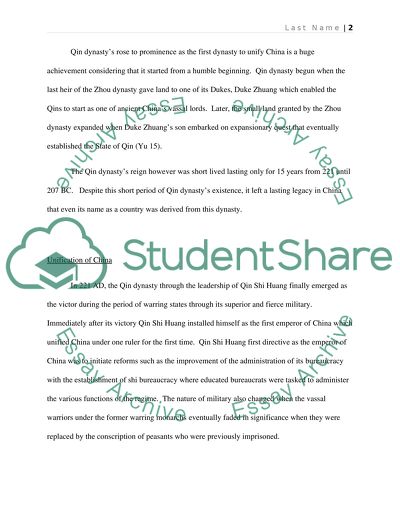Cite this document
(“Rise and Fall of the Qin Dynasty Essay Example | Topics and Well Written Essays - 1750 words”, n.d.)
Retrieved from https://studentshare.org/history/1480869-rise-and-fall-of-the-qin-dynasty
Retrieved from https://studentshare.org/history/1480869-rise-and-fall-of-the-qin-dynasty
(Rise and Fall of the Qin Dynasty Essay Example | Topics and Well Written Essays - 1750 Words)
https://studentshare.org/history/1480869-rise-and-fall-of-the-qin-dynasty.
https://studentshare.org/history/1480869-rise-and-fall-of-the-qin-dynasty.
“Rise and Fall of the Qin Dynasty Essay Example | Topics and Well Written Essays - 1750 Words”, n.d. https://studentshare.org/history/1480869-rise-and-fall-of-the-qin-dynasty.


